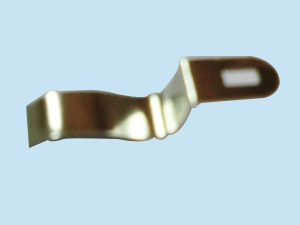Classification of precision metal stamping parts
Precision metal stamping parts mainly refer to the processed parts obtained by applying external force to materials such as plates or profiles by means of punching machines or molds to deform or separate them. With the development of industrial technology, the demand for many products in the hardware industry is growing, and the technical requirements for precision metal stamping parts are getting higher and higher, and the types are increasing.

Precision metal stamping parts can be divided into various types according to the use of various industries and the characteristics of processing technology. So what are the specific classifications of precision metal stamping parts? Are you clear? The following is a simple explanation for everyone!
1. Auto parts; mainly including automobile structural parts, automobile functional parts, automobile lathe parts, automobile relays, etc.
2. Electronic parts: mainly include connecting devices, connectors, brush parts, electrical terminals, and elastic parts.
3, home appliances parts; mainly include household electrical components, such as color tube electron gun parts, as well as small household electrical appliances parts, various structural parts and functional parts.
4, IC integrated circuit lead frame; mainly includes discrete device lead frame and integrated circuit lead frame.
5, motor iron core; mainly includes single-phase series excitation motor iron core, single-phase household motor iron core, single-phase shaded pole motor iron core, permanent magnet DC motor iron core, industrial motor iron core, plastic sealed stator core.
6, electrical iron core; mainly contains E-shaped transformer core, EI-shaped transformer core, I-shaped transformer core, and other transformer iron chips.
7, heat exchanger fins; mainly include industrial heat exchanger fins, household heat exchanger fins, automotive heat exchanger fins.
8, other types of parts; mainly include instrumentation parts, IT parts, acoustic and camera parts, modern office parts, and daily hardware.
Because stamping parts have the characteristics of material diversity, rich types, large production batches, high precision, etc., they are widely used in various industries.


